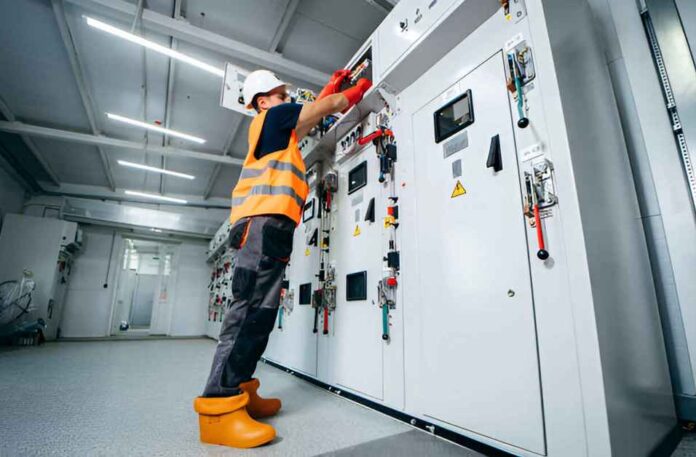The successful installation of an electrical system in any industrial setting begins with a thorough assessment of power requirements. This involves calculating total power needs, determining voltage requirements, and planning for future expansion. Modern industrial facilities often require complex power distribution systems that can simultaneously handle heavy machinery, lighting, ventilation, and various specialized equipment.
Safety Standards and Compliance
When considering electrical system installation, safety standards must be strictly followed. For an industrial setup, one needs specialized knowledge of regulations and codes governing electrical installations in commercial and industrial environments. This includes proper grounding systems, circuit protection, and emergency power solutions that meet or exceed local and national safety requirements.
To guarantee ongoing compliance and spot any risks before they become serious problems, regular inspections and maintenance plans must be put in place. Employees who operate on these systems should keep their credentials current and get regular training on the newest safety procedures. All electrical system installations, alterations, and maintenance must be documented for future reference along with regulatory compliance.
To maintain the highest safety standards, carry out risk assessments regularly to analyze system performance and pinpoint areas to upgrade or modify.
Power Distribution Planning
Any industrial electrical setup requires the heart and soul of a power distribution system. Further, this will include planning and selecting the main distribution panels, sub-panels, and routing pathways. The modern industrial setup often depends on advanced power monitoring systems for optimal performance and energy efficiency.
For continuous operations, load estimations, voltage drop correction, and redundancy needs must be carefully taken into account. Also, consider future expansion possibilities while designing the distribution system, and include scalable solutions that can handle rising power. Real-time monitoring of power quality, harmonics, and patterns of energy usage is made possible by the use of smart distribution systems.
Facility managers may anticipate maintenance requirements, optimize electricity use, and put preventative measures in place to minimize system breakdowns thanks to this data-driven strategy. Integration with building management systems can enhance control and automation capabilities, which can save energy costs and increase operational efficiency.
Equipment and Material Selection for Electrical System Installation
Proper selection of equipment and materials is necessary for a reliable installation. Components should be industrial-grade and based on the expected environmental conditions in which they are going to operate, such as temperature variations, moisture levels, and potential chemical exposure or harsh conditions.
For their intended use, all products must have the proper ratings and certifications, taking into account any applicable hazardous area categories. Equipment duty cycles, short-circuit ratings, current capacity, and voltage requirements should all be taken into consideration throughout the selection process.
Carry out a life cycle cost study, taking into account not only the original purchase price but also the estimated service life, energy efficiency, and long-term maintenance needs. To guarantee smooth integration and operation, compatibility between various systems and components needs to be confirmed.
Maintaining thorough records of all chosen equipment specifications is essential. These records should include manufacturer recommendations for installation, operation, and maintenance practices, as well as details on warranties and support needs.
Backup Power Solutions
Generally, a complete backup power plan is crucial in any industrial application. Moreover, this includes designing and implementing uninterruptible power supply systems and installing backup generators. The backup system should integrate with the principal power infrastructure with no interruptions to critical operations.
The design should guarantee a smooth transition between power sources, including automated transfer switches and advanced control systems. To confirm the system’s dependability and preparedness under varied load scenarios, regular testing procedures have to be set up.
In order to manage critical loads during prolonged power outages. It is important to scale the backup system, taking maintenance schedules and fuel storage needs into account. In order to anticipate such problems before they arise, contemporary backup systems frequently use predictive analytics and remote monitoring features.
Energy Efficiency Considerations for Electrical System Installation
Modern industrial electrical systems should be energy-efficient from the onset. These include planning for smart lighting systems, variable frequency drives for motors, and power factor correction equipment. These will optimize energy consumption without compromising the efficiency of operations.
Real-time monitoring and control of power use patterns across various equipment and processes is made possible by the implementation of sophisticated energy management systems. The facility’s sensors and meters are positioned strategically to allow for thorough monitoring of energy use and the discovery of areas for optimization.
To reduce wasteful power use during off-peak hours, the system should include automated controls for lighting, HVAC systems, and equipment scheduling. To assess system performance and pinpoint areas in need of improvement, routine energy audits must be carried out. Including renewable energy sources, such as wind turbines or solar panels, can improve sustainability even further. In addition, this will perhaps lower long-term operating expenses.
System Monitoring and Control
Advanced monitoring and control systems enable better management of the electrical infrastructure. This can be achieved by implementing power quality monitoring, demand response systems, and automated control mechanisms that keep the system operating at its optimal level.
Future-Proofing the Electrical System Installation
When considering electrical system installation, consider future expansion and technological advancement. This includes planning for additional power capacity, providing space for new equipment, and ensuring the system can accommodate emerging
technologies.
Maintenance Access Planning
The installation of the electrical system requires proper planning for access to maintenance. Furthermore, this includes designing clearances around electrical equipment, installing access panels at strategic locations, and creating detailed documentation of the entire system for future reference.
Testing and Commissioning
Before full operation commences, complete testing and commissioning operations are to be done. That guarantees that all equipment interacts well to achieve the intended performance. Load tests, test results, and documentation of all aspects are included as safety system checks are performed during testing.
Documentation and Training
Documentation of the electrical system installation should include detailed drawings, specifications, and maintenance procedures. This should be accompanied by comprehensive training for facility personnel who will operate and maintain the system.
Conclusion Electrical System Installation
An effective electrical system installation for any industry requires careful planning, expert implementation, and attention to detail. Taking these considerations into account ensures a reliable, efficient, and safe power distribution system that meets current needs while preparing for future requirements. Professional expertise combined with thorough planning creates electrical systems that serve as the backbone of efficient industrial operations.

